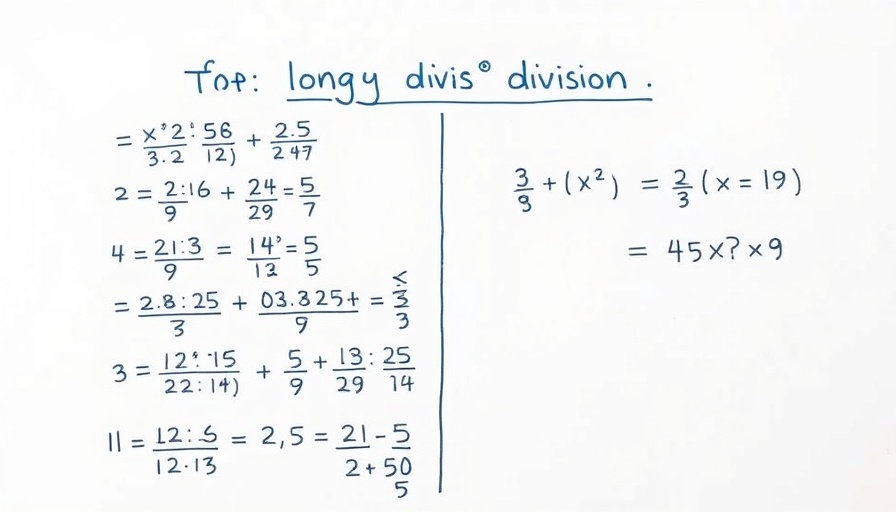
Understanding the Limitations of Modulo Operations in Large Integers
In the realm of programming and data analysis, the ability to compute the modulo operation effectively is crucial, especially when it comes to handling large integers. In SAS, the MOD function is a common tool for calculating the remainder when dividing one integer by another. As reported by a concerned SAS user, there are limitations when working with integers that exceed specific thresholds, particularly in financial applications requiring accuracy, such as the generation of a Universal Loan Identifier (ULI).
Why the MOD Function Faces Challenges with Large Integers
The Quotient-Remainder Theorem establishes that any integer can be expressed as the sum of its quotient and remainder when divided by another integer. Yet, SAS imposes a significant limitation on the MOD function when it comes to large integers, specifically integers exceeding the 'ExactInt' constant of about 9.007E15. The moment integers surpass this cap, the MOD function returns a missing value, leaving users without the necessary results. For instance, a look at various large integers reveals differing outputs:
This limitation presents itself in critical scenarios involving financial computations where precision is paramount. In handling integers from the ISO algorithm for ULI validation, users may encounter operational failures due to the MOD function’s inability to process exceedingly large integers.
Illustrative Examples of MOD Function Limitations
Let’s consider the practical implications of this limitation. For smaller integers, the MOD function performs accurately, yielding precise remainders. However, as demonstrated:
- For an integer less than the 'ExactInt' constant, such as 1197488900719925474, the function returns valid outputs.
- At the boundary, the 'ExactInt' value itself returns a valid output, showing 32 as its remainder.
- Conversely, two larger integers with 37 digits each return an error, emphasizing how oversized values challenge SAS's computational abilities.
These discrepancies indicate a need for alternative approaches when facing extensive numerical operations. Understanding these parameters allows for better planning in computations involving significant financial transactions, enhancing the reliability of AI learning paths and applications.
Exploring Solutions for Large Integer Modulo Calculations
Fortunately, there are strategies to tackle the limitations imposed by the MOD function on large integers. By breaking down the integers into smaller, manageable segments or utilizing algorithms specifically designed to handle larger values, you can sidestep the restrictions of the SAS environment:
- Custom Algorithms: Develop algorithms to split large integers and perform modulo calculations on smaller parts before aggregating results.
- External Libraries: Integrate programming libraries that specialize in large integer computations, providing a more reliable framework.
- Precision Tools: Explore software solutions that offer more advanced mathematical capabilities, allowing for precise handling of enormous datasets.
These methods not only enhance the robustness of handling financial regulations but also pave the way for AI-driven innovations capable of managing vast amounts of data effectively.
Future Implications: Navigating Large Integer Challenges in AI
As the world moves towards greater reliance on AI technologies in finance and other sectors, it’s essential to consider how current limitations in data processing, like in SAS, might impact these innovations. In particular, when working on AI learning paths and applications, the need for precision is paramount. Developers and analysts must be equipped with strategies and tools to navigate these challenges successfully.
Particularly for financial systems that require high accuracy, understanding the limitations of the tools we employ and adapting our approaches can significantly impact outcomes. The development of more advanced computing methods will undoubtedly lead to enhanced capabilities and foster innovation.
Your Role in Understanding Modulo Operations
As learners and adopters of AI technology, understanding the inner workings of modulo operations and their implications on large integers is beneficial not just for programming but for grasping how data systems affect financial transactions and regulations. By familiarizing yourself with these concepts, you can position yourself at the forefront of technology innovations.
 Add Row
Add Row  Add
Add 




Write A Comment